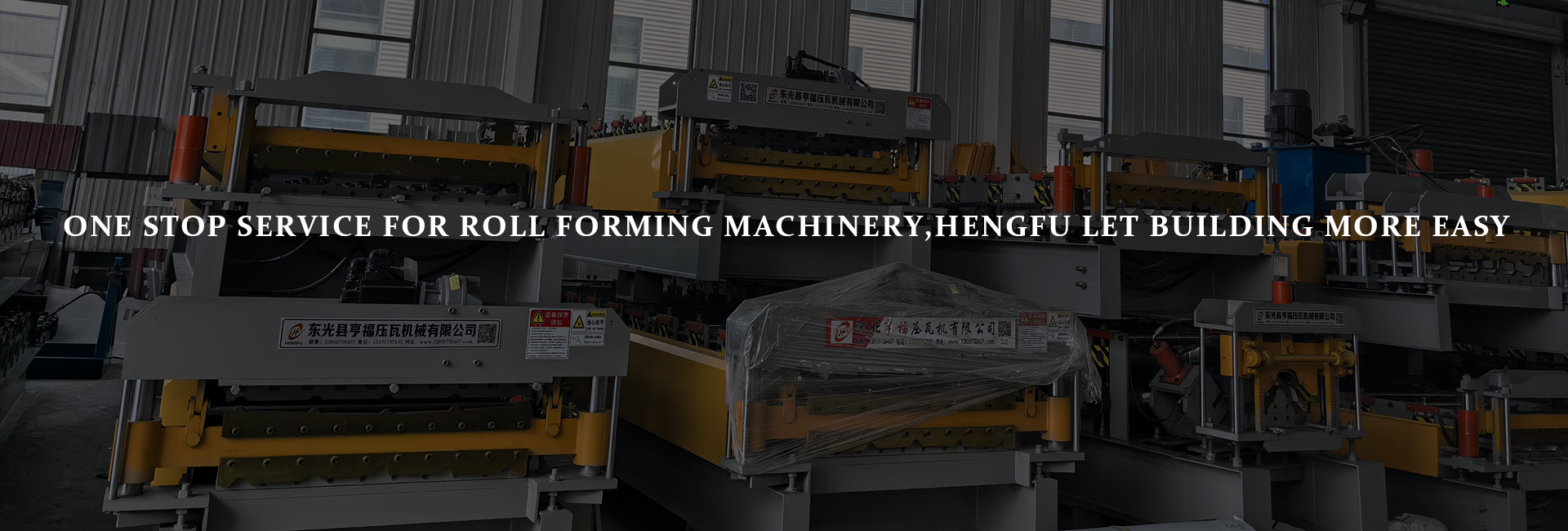I. Introduction: The Core Value of Operational Standards
Adhering to standard operating procedures is fundamental to ensuring the efficient operation of a metal roof forming machine and the safety of personnel. Beginners must master the full workflow essentials.
II. Pre-Operation Preparation
Equipment Checklist
1.Roll Pressing Dies
· Confirm installation is secure, with no wear or deformation.
· Check for uniform die gaps to prevent material distortion.
2.Transmission Components
· Inspect chain and gear lubrication; ensure no foreign objects are obstructing movement.
· Manually rotate components to verify smooth operation.
3.Electrical & Control Systems
· Verify circuit connections are intact and control parameters are set to default values.
· Test emergency stop buttons and overload protection mechanisms.
Safety Gear & Workspace
· Wear protective gloves, goggles, and earplugs.
· Clear debris around the machine to ensure unobstructed operation.
III. Step-by-Step Operation Process
Startup Procedure
1.Power On
· Ensure voltage matches the machine’s rating.
· Activate the control system and allow the machine to preheat to a stable state (typically 10–15 minutes).
2.Load Material
· Adjust the feed guide to match the target material’s width, ensuring proper alignment.
Monitoring During Operation
1.Forming Process
· Continuously adjust feed angle and speed parameters to prevent material misalignment or wrinkling.
· Verify the formed sheet meets design specifications.
2.Anomaly Detection
· Monitor for abnormal noises, vibrations, or other irregularities; pause operation immediately if detected.
· Check for foreign objects or insufficient lubrication.
Shutdown Procedure
1.Power Off
· Turn off the control system before disconnecting the power supply.
2.Cleanup & Maintenance
· Remove residual debris from dies and apply anti-rust oil to critical components.
· Inspect and tighten bolts; log machine operation details.
IV. Basic Application of Intelligent Control Systems
Parameter Setting Logic
1.Material Type
· Adjust roll pressure based on material thickness and type (e.g., galvanized steel, color-coated steel).
2.Profile Requirements
· Configure forming arc, wave height, and pitch to match design drawings.
Fault Warning Identification
1.Error Codes
· Learn common error codes (e.g., E01 for overload, E02 for sensor malfunction).
· Use codes to quickly diagnose issues (e.g., overload may indicate excessive material thickness or tight die gaps).
V. Daily Maintenance & Safety Protocols
Maintenance Essentials
1.Daily Cleaning
· Clean transmission components and inspect for loose bolts.
· Check chain tension and lubrication levels.
2.Periodic Calibration
· Calibrate pressure sensors to ensure forming accuracy.
· Monitor hydraulic oil levels and replace as needed.
Safety Red Lines
Personnel Management
· Restrict operation to authorized personnel only.
· Never touch the roll-pressing area during operation to avoid crushing injuries.
Emergency Response
· Immediately press the emergency stop button in case of malfunction.
· Follow power-off inspection procedures; never repair under power.
VI. Conclusion: From Novice to Pro
Mastering standardized operations and basic maintenance is key to extending machine lifespan and improving construction efficiency. For advanced techniques, explore the machine’s advanced user guide.







